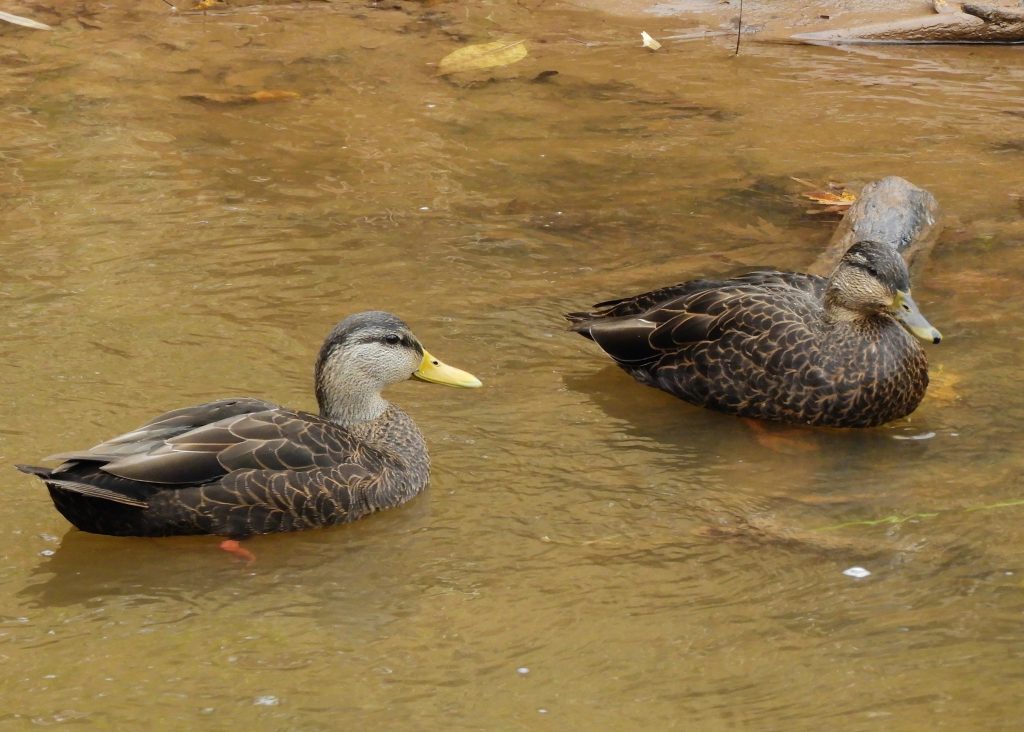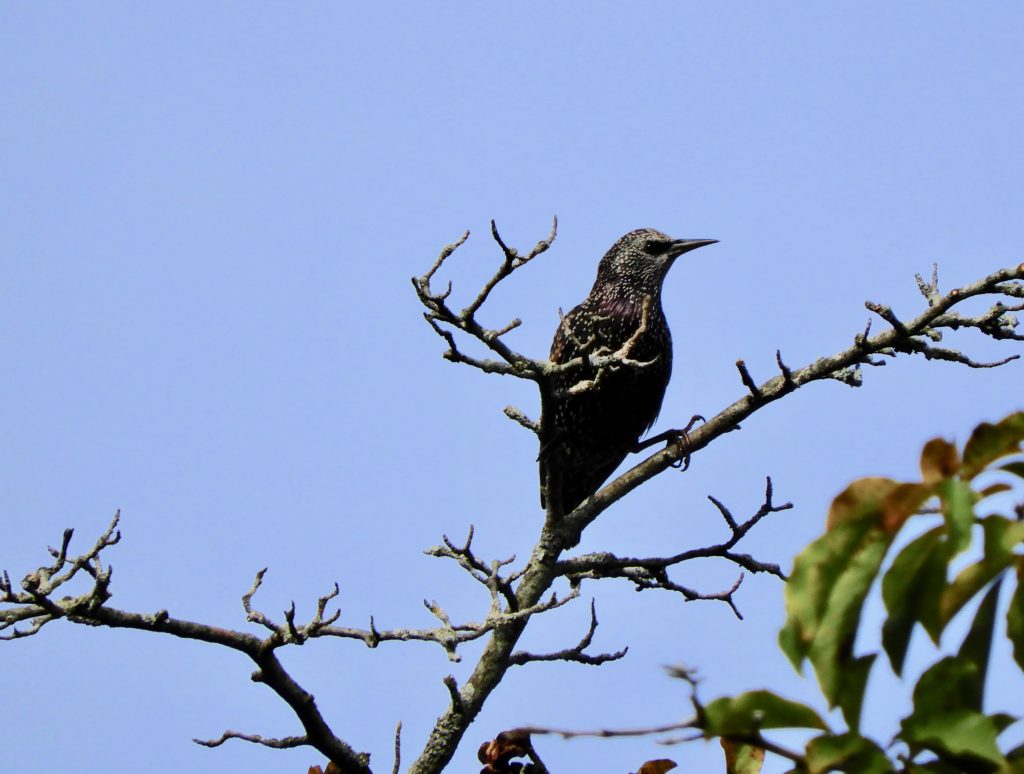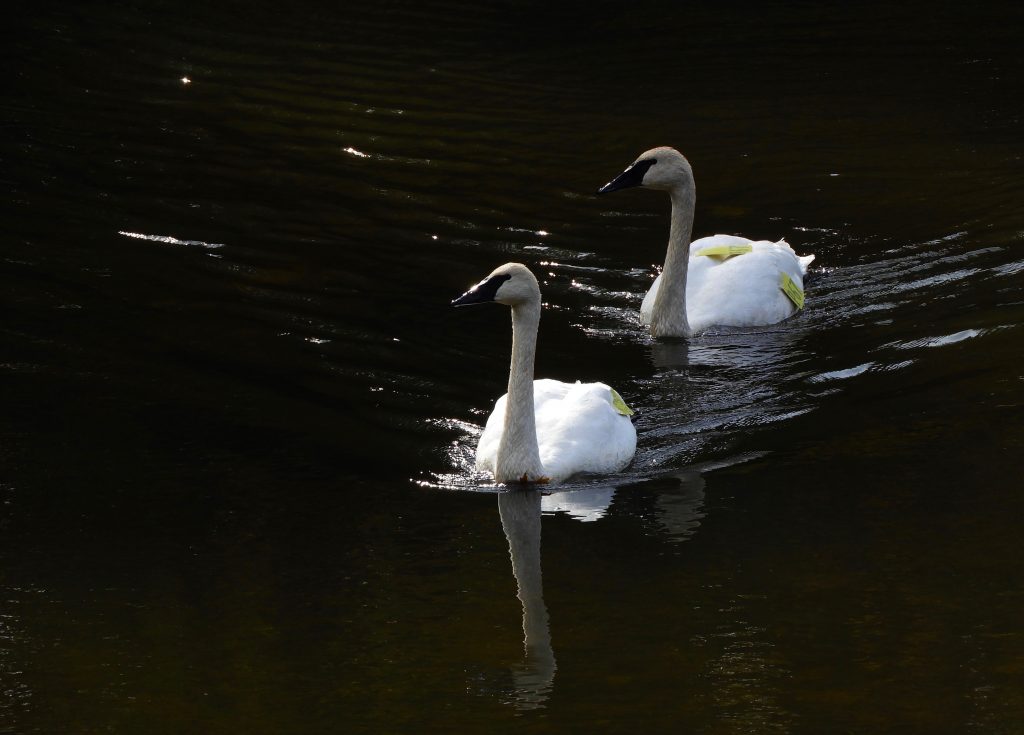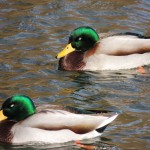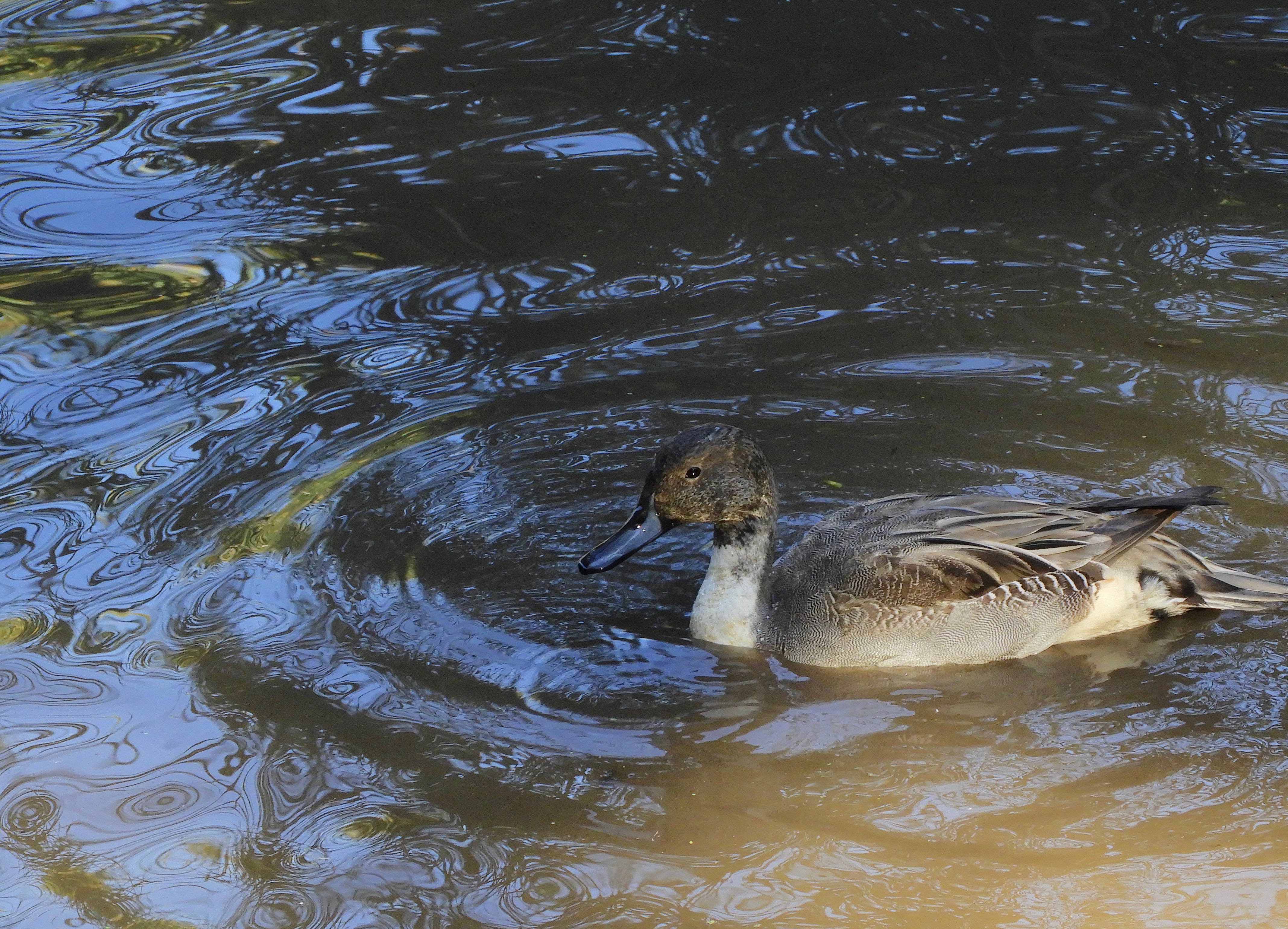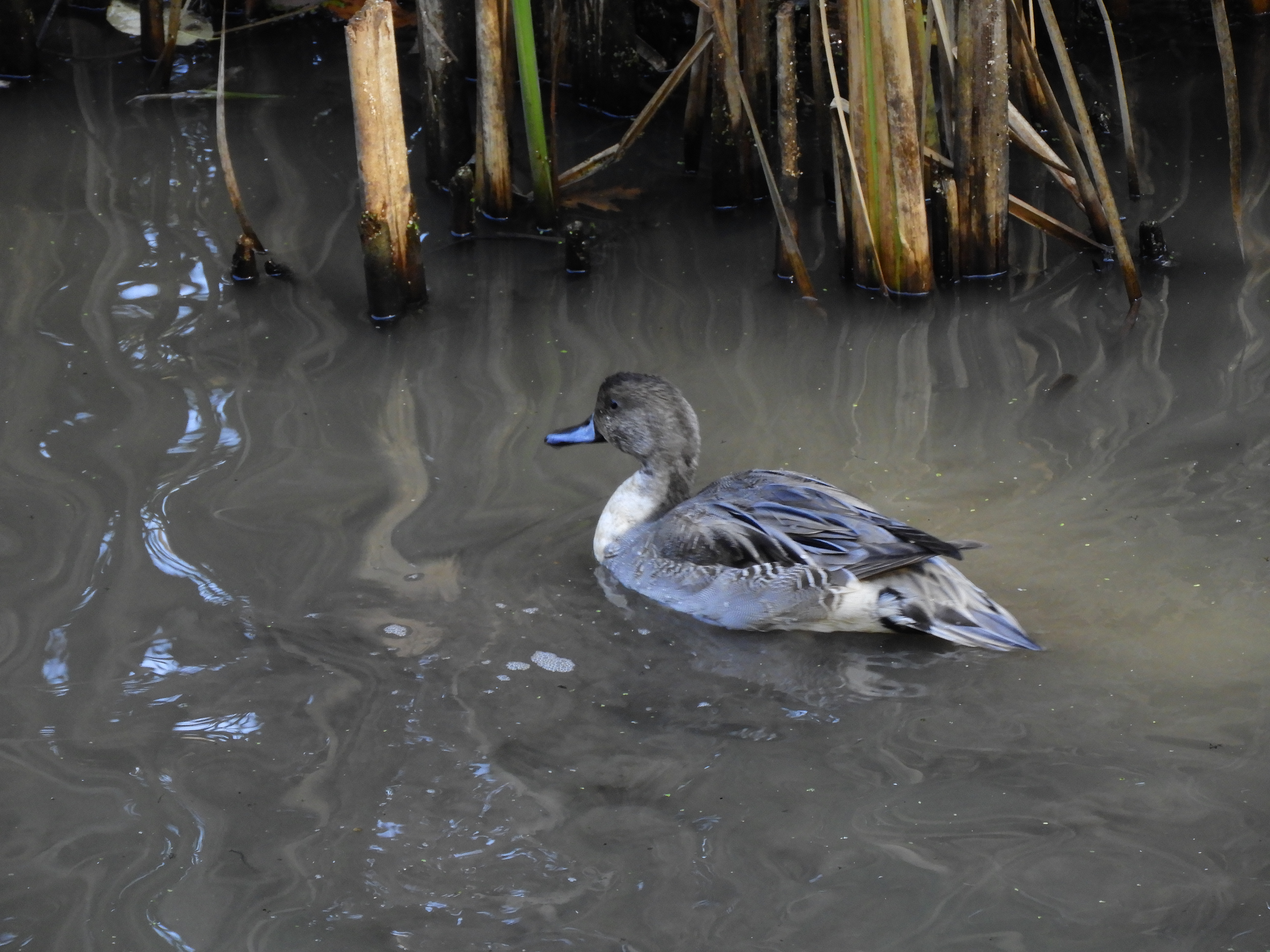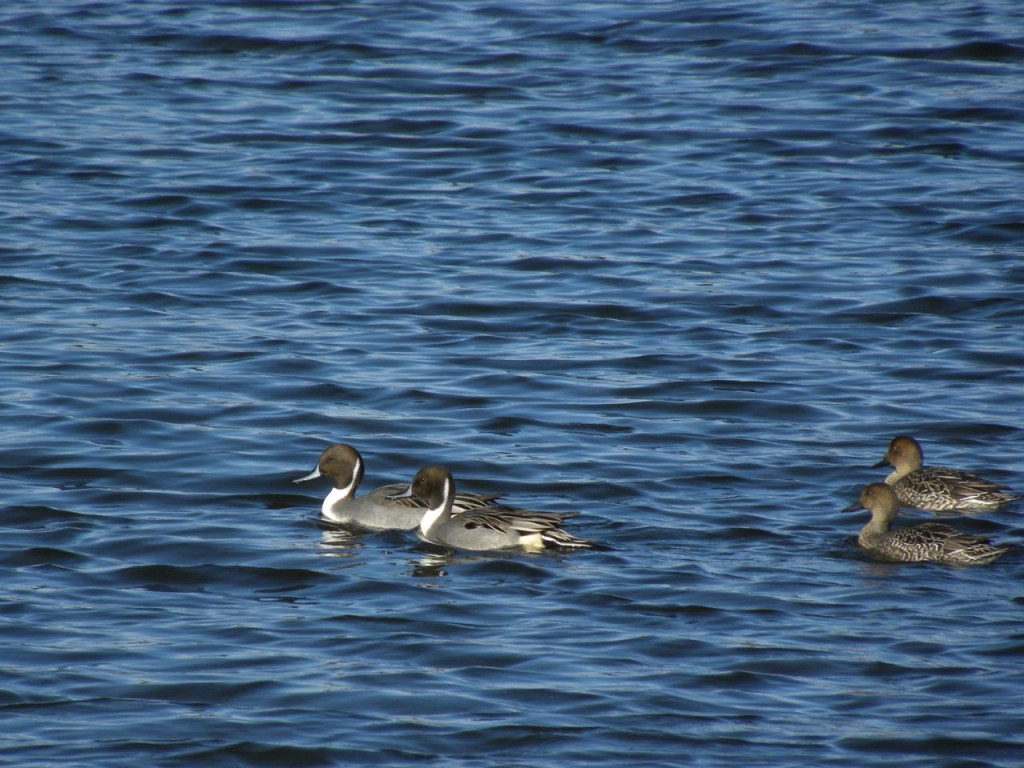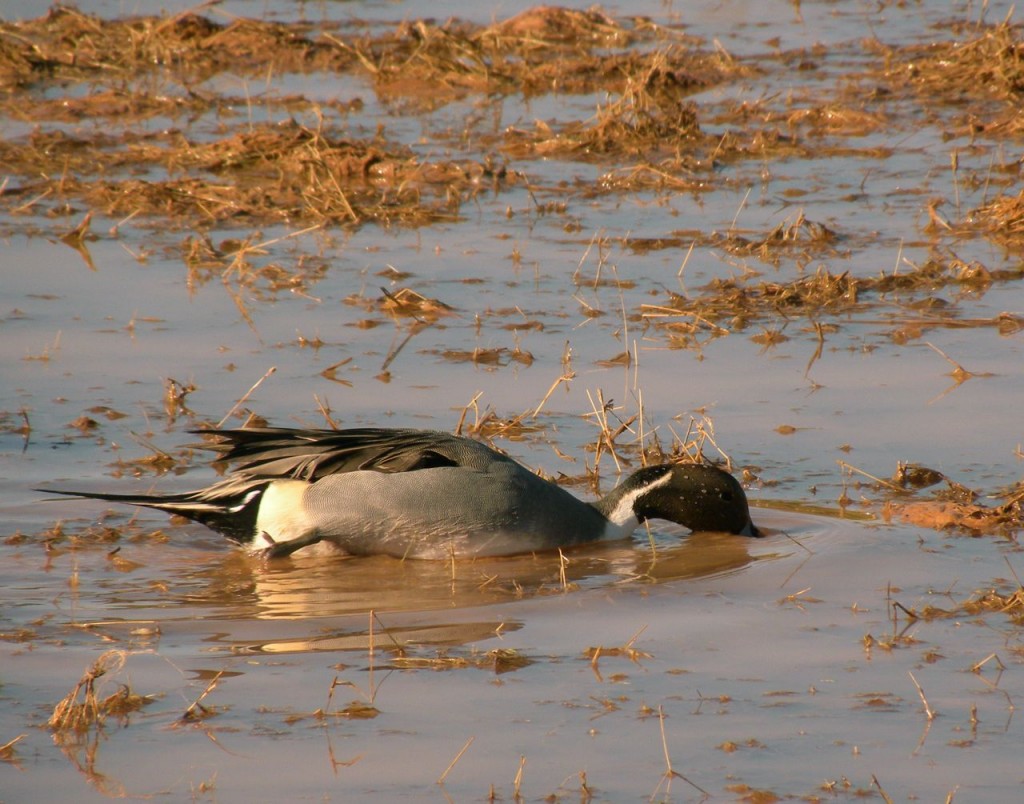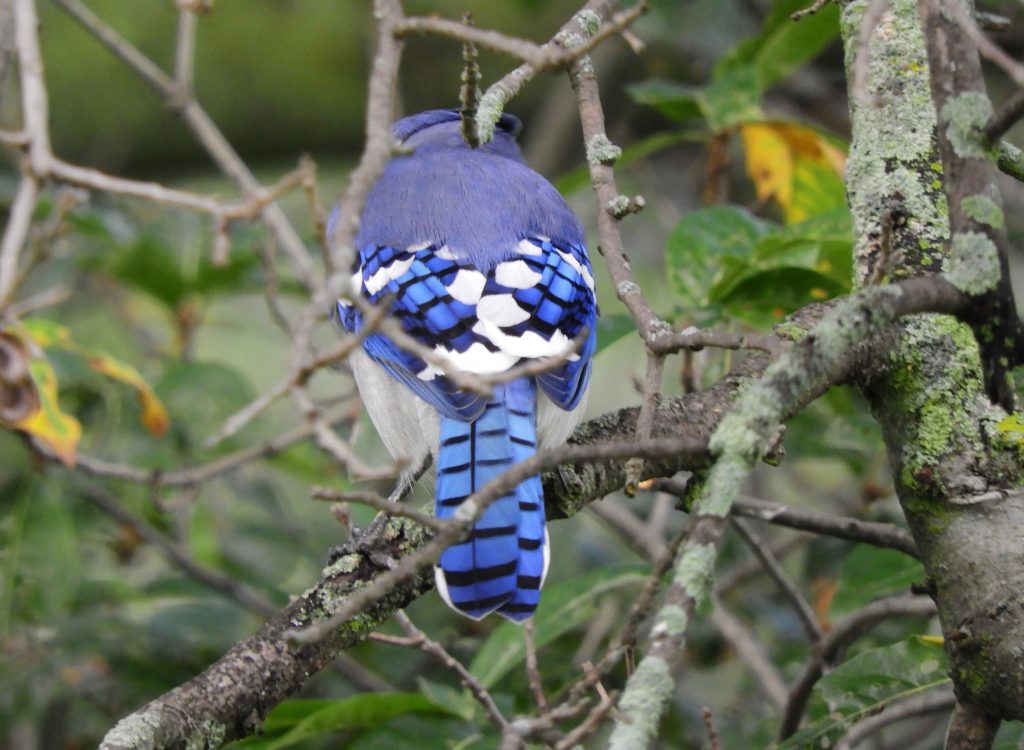November 1 2019. Hendrie Valley, Burlington, ON. Another buffeting autumnal storm left the valley cold, drenched and quiet this morning, quiet except for the rattling west wind skimming the treetops. The paths were deep in freshly fallen leaves. Birds seemed to have slept in late although, how do they sleep at all and where do they find shelter in riotous storms?
We covered our transect route efficiently and came up with a satisfying tally of 26 species including one or two nice surprises.
A Winter Wren popped up, explored the cervices of willow stump and then vanished. That’s the way wrens behave, up for a moment, a quick meal check then back down in to the tangled depths where you’d think wings would only get in the way.
A pair of American Black Ducks watched us as warily as we admired them. I think they were largely indifferent to what our future holds while we enjoyed their simple elegance. These photos are interesting, note how the contour feathers of this bird have buff fringes and lie in a pattern like Art Deco Japanese fans.
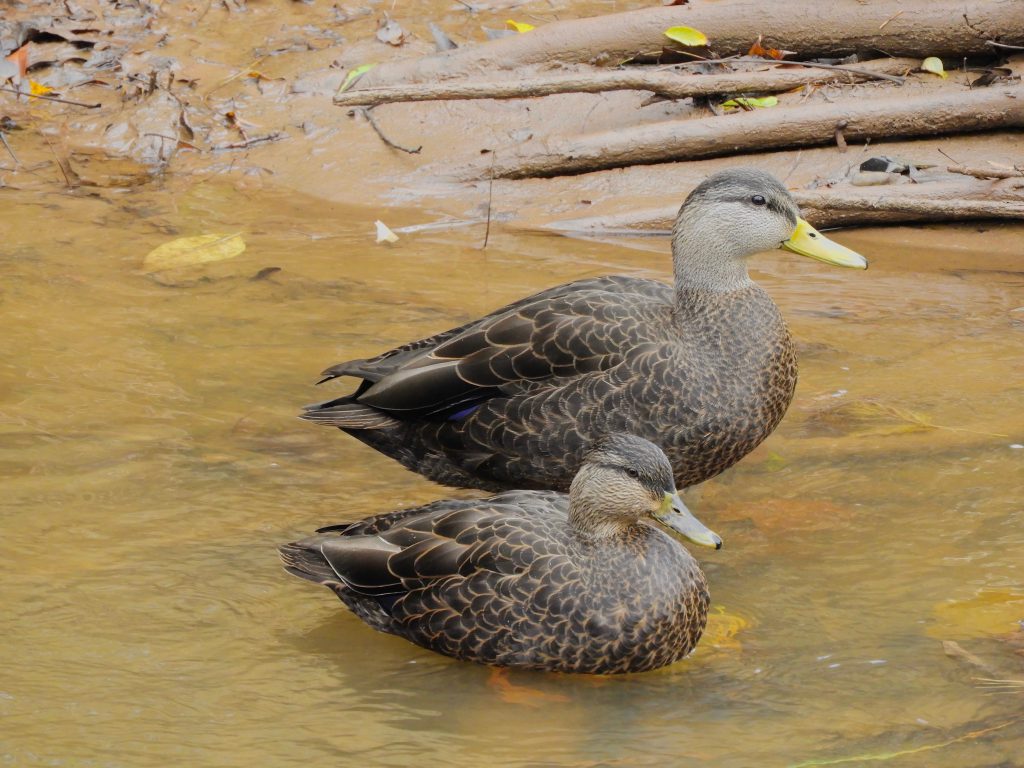
A lingering White–throated Sparrow sang raspily and a couple of late lingering Turkey Vultures circled the valley riding the November gusts.
Bird of the Day was a Ring-necked Duck that skittered anxiously away, but we caught up with it and I was able to get a couple of decent photos through the pond-side dogwoods. It was My Bird of the Day mostly because it was quite unexpected but also because they prefer to keep their distance. I guess this one thought it was safely away from us but here it is.

